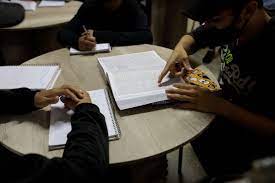2022 Applications for the Learner Dropout Rate Should Be Of Public Concern? StatusApplications are Open 2022

Internship in South Africa, Jobs Internship in South Africa, Online Internship in the South Africa 2022, Post Office Releases Dates For Sassa Grant Collection is open for interested applicants to apply.
TikTok Open Internship in Several Provinces in South Africa 2022 for interested applicants to apply.
If you are searching for an internship in South Africa, TikTok has brought Internships for Graduates and non Graduates.
2022 Applications for the Learner Dropout Rate Should Be Of Public Concern? StatusApplications are Open 2022
In 2020, learners lost 4 months of their learning time, however, the majority in that cohort of matric learners managed a pass rate of 76.4%. However, experts have raised questions around these stats and other factors that the public should be concerned about when it comes to the health of the South African education system.
Credit should be given to the class of 2022 that have managed to pass after 4 months of learning time lost in 2020, which is the year in which they were doing grade 11.
Annually, the DA challenges the Education Minister about the matric results, saying that these figures aren’t true.
The political party claimed that the real pass rate is 51% because it does not take into consideration the high dropout rate, as the 2022 learner dropout between grades 10 to 12 is 32.7%.
Northern Cape was one province that was highlighted to have the highest school dropout rate in the country, with 44.7% of learners that were enrolled in grade 10 in 2019 not sitting for the Grade 12 final exams in 2022.
However, a senior research associate at the University of Johannesburg, Mary Metcalfe emphasized that the dropout rate should be of public concern.
“We don’t have detailed enough information about each learner across the country and whether or not they are repeating, and there are very high levels of repetition,” said Metcalfe.
The Dropout Campaign points out that the pass rate does not tell us what percentage of the cohort of learners who started in Grade 1, actually made it to matric and passed.
Although, researchers have attempted to calculate the ‘true matric pass rate’ by taking a longitudinal view of a Grade 12 cohort – starting with the number of learners that enrolled in Grade 1.
In a radio interview on Cape Talk, Mary Metcalfe said:
The DBE (Department of Basic Education) is supposed to be implementing something which is an individual tracking system, and hopefully one day it will be there.